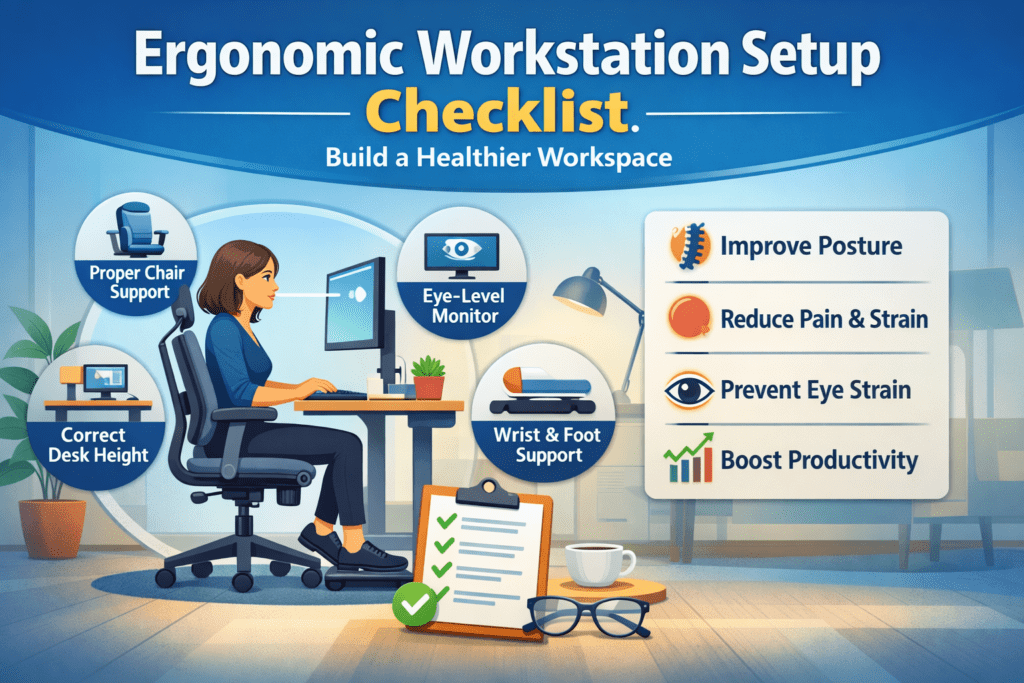Ensuring Construction Safety During Monsoon
The start of monsoon means a plethora of uncountable hazards follow, especially at a construction site. This blog explores how to ensure construction safety during the monsoon season. Key measures include identifying hazards, monitoring weather, using proper PPE, and conducting structural assessments. Effective drainage, regular inspections, and good housekeeping are essential. Training, collaboration, and sustainable practices enhance safety, while innovations like drones and wearable devices improve risk management.
Table of Contents

Introduction
As dark clouds gather and the monsoon rains begin, they offer a welcome break from the scorching heat. However, this season also brings numerous challenges to construction sites, increasing the risk of accidents due to heavy rain, strong winds, and slippery surfaces. Flooded work areas, unstable structures, and loose equipment can all pose serious hazards. Additionally, water mixing with electrical components creates a dangerous environment. This blog covers important strategies and best practices to reduce these risks and keep workers safe during the monsoon season.
Understanding Rain Hazards in Construction: Risks Faced by Construction Workers
Slippery Surfaces
Heavy rainfall can lead to the accumulation of water on walkways, scaffolding, and work areas, making them dangerously slippery. This increases the likelihood of slips, trips, and falls, which can cause a range of injuries from minor to severe.
Flooding
Intense monsoon rains often result in sudden flooding, especially in low-lying areas of construction sites. Flooding poses immediate risks, such as drowning and the potential for structural instability, threatening both worker safety and the project’s integrity.
Unstable Structures
Continuous exposure to rain can weaken construction structures, resulting in waterlogged foundations and soil erosion. These conditions can lead to subsidence or even sinkholes, significantly endangering the site’s stability and worker safety.
Falling Objects
The strong winds that often accompany monsoon rains can dislodge or destabilize materials and tools. These objects can fall from heights, posing severe risks to workers below. Ensuring all materials are securely fastened is crucial to preventing such accidents.
Electrical Hazards
Water exposure during the monsoon season heightens the risk of electrical hazards. Electrical equipment and wiring can become extremely dangerous when wet, potentially causing electric shocks that may result in severe injuries or fatalities. Proper inspection and safeguarding of electrical installations are essential for electrical safety to workers.
Weatherproofing Strategies & Rain Safety Tips for Construction Sites
Hazard Identification:
Conduct a comprehensive assessment to identify potential monsoon hazards like slippery surfaces, flood-prone areas, unstable structures, falling object risks, and electrical hazards.
Weather Monitoring:
Monitor weather forecasts and rainfall patterns to anticipate heavy rains and plan work schedules accordingly.
Personal Protective Equipment (PPE):
Provide waterproof clothing, non-slip boots, helmets with face shields, and other necessary Personal Protective Equipment (PPE).
Training and Education:
Educate workers on monsoon-specific risks and conduct regular training on safety protocols and emergency procedures.
Site Preparation:
Implement weatherproofing strategies like covering open areas, securing loose materials, and reinforcing structures.
Drainage and Erosion Control:
Ensure a robust drainage system and implement erosion control measures to prevent water accumulation and flooding.
Regular Inspections:
Frequently inspect structures, scaffolding, and equipment to identify and address weaknesses caused by rain hazards.
Safety Message for Heavy Rain and Warnings:
Install clear safety signage throughout the site, warning workers of hazards and indicating safe routes.
Collaborative Efforts:
Promote open communication and collaboration among contractors, supervisors, and workers to share safety concerns and feedback. Introducing the use of a digital platform such as a Hazard Reporting Software can be of great assistance.
Protective Gear for Wet Weather:
Outfit workers with appropriate protective gear to shield them from rain and potential hazards.
Rain Safety Tips for Construction and Structural Inspections for Monsoon Preparedness
Pre-Monsoon Structural Assessment
Before the monsoon season begins, it is crucial to engage structural engineers to thoroughly evaluate all construction elements. This assessment helps identify any existing vulnerabilities that could be exacerbated by the rainy conditions, ensuring proactive measures can be taken to mitigate risks.
Evaluating Foundation Stability
Assess the foundation’s ability to withstand increased moisture levels and potential soil erosion during the monsoon season. Strengthening foundation stability is essential to prevent structural failures and ensure long-term safety.
Reinforcement and Waterproofing
Based on inspection findings, reinforce any weak structural elements and apply waterproofing treatments to protect against water seepage and dampness. This includes additional bracing and the use of water-resistant materials to improve the overall durability of the construction.
Checking Drainage Systems
Ensure all drainage systems, such as gutters and stormwater drains, are clear of debris and functioning correctly. Effective drainage prevents water accumulation, reducing the risk of flooding and water-related damage to the site.
Roof Inspection
Conduct a thorough inspection of the roof to identify and repair leaks, damaged or missing tiles, and any other issues. Proper roof maintenance prevents water infiltration, which can compromise structural integrity.
Scaffolding and Temporary Structures
Inspect all scaffolding and temporary structures to ensure they are secure and capable of withstanding monsoon weather. Reinforce and stabilize these structures as needed to prevent collapses and ensure worker safety.
Soil Erosion Mitigation
Implement measures like retaining walls, erosion control blankets, and vegetation to prevent soil erosion around the construction site. These methods help stabilize the soil and protect against slope failures.
Ongoing Monitoring
Throughout the monsoon season, continuously monitor the construction site for new vulnerabilities or damages. Regular inspections during and after heavy rains can help detect and address any emerging issues promptly.
Promoting Good Housekeeping
Maintaining a clean and organized construction site is crucial during the monsoon season. Clear walkways and work areas of debris and water to prevent slips and falls. Regularly inspect and maintain site infrastructure and use warning signs to highlight hazards. Good housekeeping practices not only enhance safety but also improve overall efficiency and morale among workers.
Training and Education for Monsoon Safety
Education is a powerful tool for ensuring worker safety. Comprehensive training programs on monsoon-specific risks, safety protocols, and emergency procedures can empower workers to make informed decisions. Utilizing interactive training tools, such as Safety Animation videos and eLearning platforms, can enhance understanding and retention of safety information, ensuring that workers are well-prepared to handle monsoon challenges.
Collaborative Efforts for Safety
Safety during the monsoon season requires teamwork. Encourage open communication between contractors, supervisors, and workers to identify risks and share safety concerns. Collaborative efforts can lead to more effective implementation of safety measures and foster a culture of safety where everyone is committed to protecting each other.
Environmental Impact and Sustainable Practices
While focusing on safety, it’s also important to consider the environmental impact of construction activities. Implement sustainable practices like rainwater harvesting and erosion control to minimize ecological damage. These measures not only protect the environment but also contribute to the long-term sustainability of construction projects.
Best Practices from Real Projects
Learning from successful projects can provide valuable insights into effective monsoon safety strategies. Case studies and real-life examples of how other construction sites have managed monsoon-related challenges can inspire and guide the implementation of similar practices. Sharing knowledge and experiences can elevate industry standards and improve overall safety.
Future Perspectives and Innovations
Innovation plays a key role in enhancing construction safety. Emerging technologies such as drones for site inspections and wearable safety devices can provide new ways to monitor and manage risks. Staying proactive and adopting these innovations can significantly improve safety practices and ensure a safer working environment during the monsoon season.
Conclusion
The monsoon season requires a proactive approach to construction worker safety. By understanding hazards, implementing weatherproofing strategies, providing protective gear, and prioritizing preventive measures, we can create a safe working environment. Education, collaboration, and sustainable practices are crucial to maintaining safety standards. Let’s ensure the well-being of our construction workforce, even in challenging weather conditions.
Share Blog
Recent Posts:
FAQ's
Construction workers face several hazards during the monsoon, including slippery surfaces, flooding, unstable structures, falling objects, and electrical hazards due to water exposure.
Preparation involves conducting pre-monsoon structural assessments, ensuring foundation stability, reinforcing weak structural elements, clearing drainage systems, inspecting roofs, and stabilizing scaffolding and temporary structures.
Implementing retaining walls, erosion control blankets, and vegetation can help stabilize the soil and prevent erosion around the construction site.
Continuous monitoring throughout the monsoon season is crucial to detect and address new vulnerabilities or damages promptly, ensuring the ongoing safety of the construction site.












